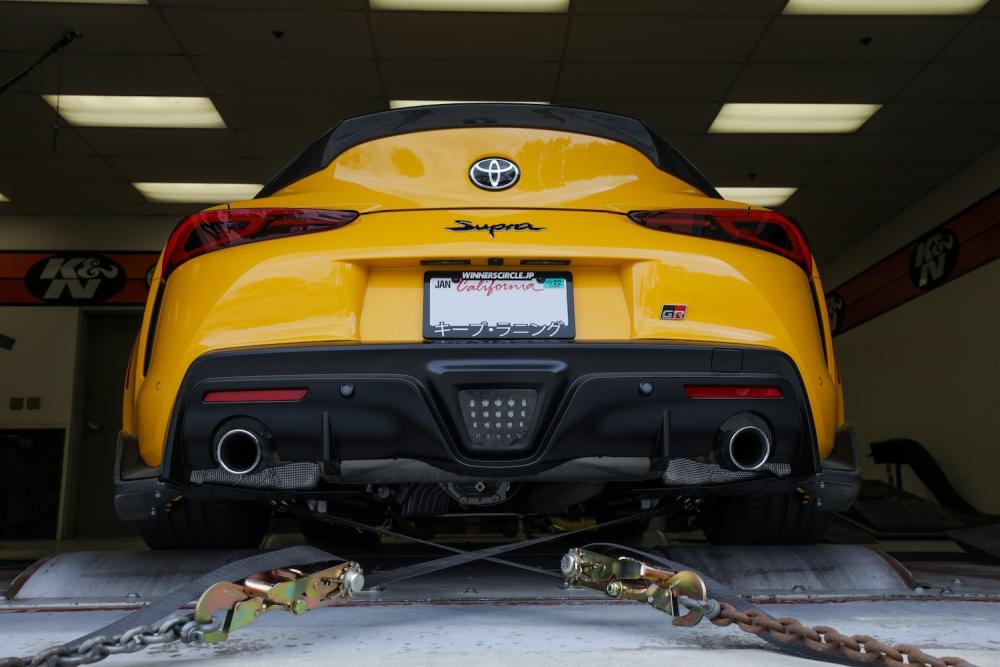Why You Don’t Need A Tune With A K&N Cold Air Intake: How We Get The Most Horsepower On A Stock Tune
- Jun 1, 2024

You may have erroneously heard people on social media or online forums spout off that you need to get a custom tune to take advantage of a Cold Air Intake. We’re here to dispel this myth and give you all the information you need so you can confidently upgrade your vehicle with a new K&N intake system without worrying about the need for a tune.


Digitally Scanning The Engine Bay
The first step in creating more horsepower on a stock tune starts with the K&N Engineering team using special scanning equipment to create a digital file with the exact dimensions of the engine and factory components under the hood. They can then use this data to design an all new cold air intake system that will fit like a glove. Once the new intake design is ready, the team will 3D print a prototype and start real world testing.


Air Flow Testing and Mass Air Compatibility
The first test begins on the SuperFlow SF-1020 flow bench with the Mass Air Flow sensor installed in the new K&N® Cold Air Intake prototype to ensure that the added airflow is within the tolerance of the factory settings. The goal is to allow a significant airflow increase, but not such a big increase that the sensor will be out of factory tolerances and create driveability issues. Once the engineers verify that the new air intake is within spec and the air flow testing checks out, the team takes it over to the vehicle for the next phase of testing.


Drive Loop Testing
The Team then connects a scan tool to the factory vehicle and takes it on a 50-mile drive loop for datalogging purposes. Once that drive loop is complete, the new K&N® Cold Air Intake is installed and the vehicle is taken back out on the same 50-mile drive loop to compare the data of both drive loops. Extensive data is collected and reviewed through this process including inlet air temperatures, fuel trims, timing, mass air readings, and more. The engineers will also look for any possible issues that might trigger a check engine light or drivability problems.


Dyno Testing
Once the vehicle passes the drive loop testing, it is loaded onto the dynamometer for performance testing to obtain the most horsepower out of the stock tune. The dynos at K&N® can accommodate a multitude of vehicles from front wheel drive, rear wheel drive and even all-wheel-drive platforms including trucks and 4x4’s, and even motorcyles. With the vehicle hooked up, the team will test the vehicle in stock condition three to five times to get consistent data to benchmark against. Once the stock dyno testing is complete, the new K&N® Cold Air Intake is installed and the vehicle will undergo three to five more dyno runs. Once that’s done, the engineers will compare the results to see how much horsepower they were able to gain and where the gains appeared in the vehicle’s powerband.


Redesign, Retest, Repeat Until Most Horsepower Is Achieved
If the team believes there are improvements that can be had, the engineers will redesign the cold air intake from scratch and restart the previous test procedures. This process is repeated as many times as necessary to ensure they are achieving the most horsepower on the vehicle’s stock tune.


Production Approval
Once the final design is completed, the K&N® Cold Air Intake will go into production right here in the USA. K&N further backs up its claims with real proven dyno results you can see for yourself by selecting your year, make, model and engine from the vehicle selection tool and clicking on the Dyno Chart under the product image. https://www.knfilters.com/cold-air-intakes
*Note: Some intakes are not legal for sale or use on any pollution controlled motor vehicle in California. See knfilters.com for CARB status on each part for a specific vehicle.









